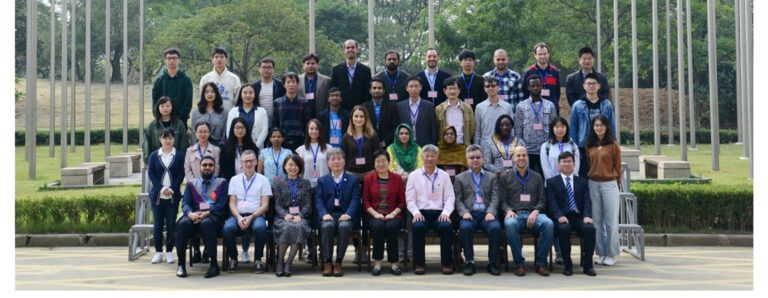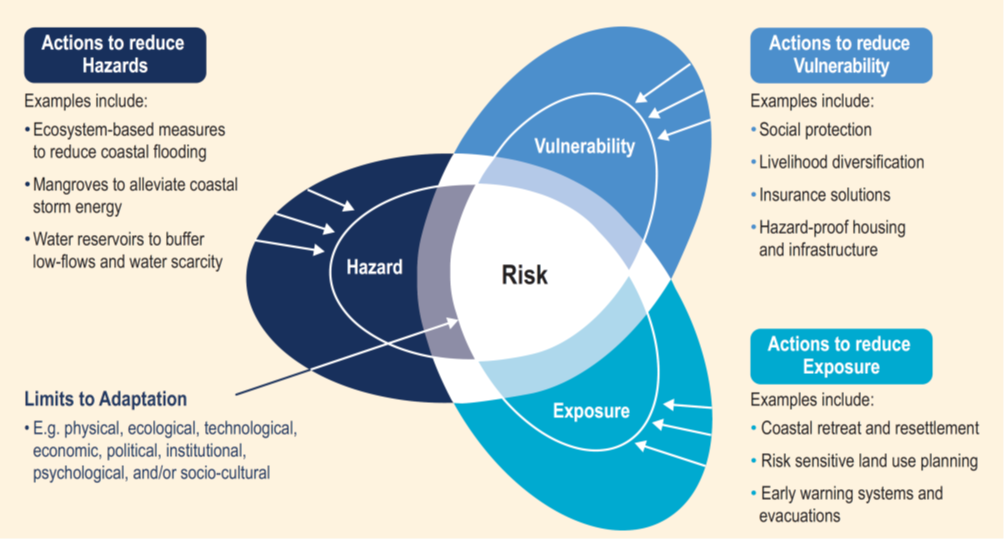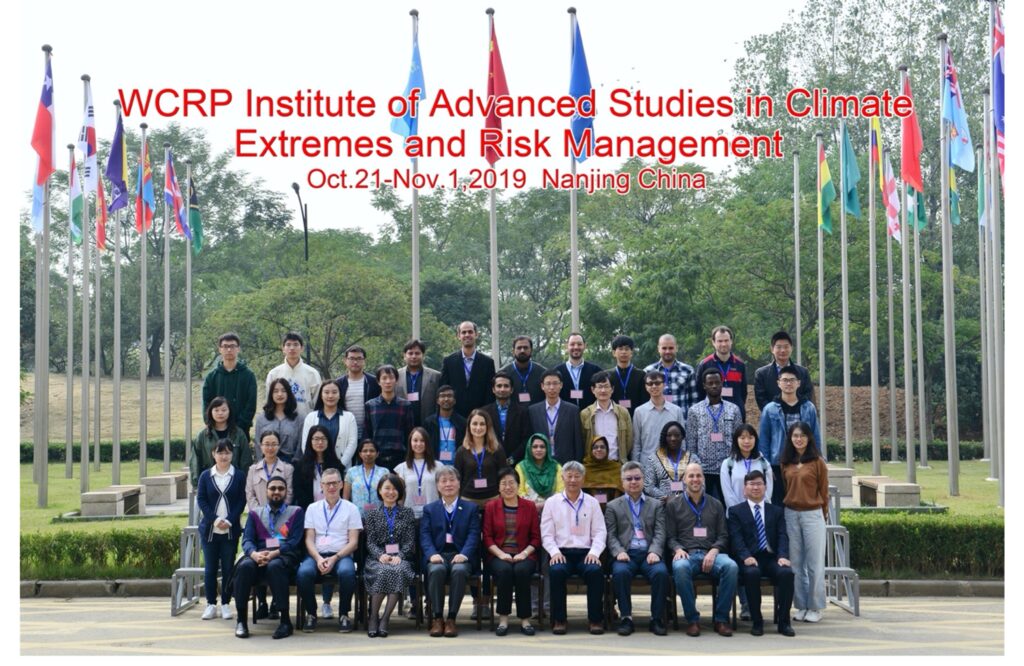
Facilitating knowledge sharing and co-creation between communities of climate research and its users
Highlights
- Empowerment of stakeholders on climate information and adaptation.
- Joint exploration of stakeholders on key topics such as climate changes, extreme climate, climate forecast and risk management.
- Efforts to involve early-career scientists in climate science leadership.
1. Introduction
The Intergovernmental Panel on Climate Change (IPCC), in its 6th Assessment Report (AR6), removed any doubt about the human nature of climate change, stating that “it is unequivocal that human influence has warmed the atmosphere, ocean and land” and that “human-induced climate change is already affecting many weather and climate extremes in every region across the globe” (IPCC, 2021, p. 4). Human influence has resulted in changes in weather and climate extremes. For example, hot extremes (including heatwaves over land and marine heatwaves) have increased and cold events have decreased in every region assessed in the IPCC AR6 WGI report (Seneviratne et al., 2021). There are clear increases in the frequency and intensity of heavy precipitation in every region and increases in agricultural and ecological droughts in almost all regions that are prone to drought, such as the Mediterranean region. In addition to changes in weather and climate extremes, climate change has also resulted in changes in the magnitude, frequency, duration and seasonality of many other climatic impact-drivers, such as growing season (Table TS.5 of Arias et al., 2021).
Climate change has also resulted in widespread impacts on nature and people. The impacts range from increased heat-related human mortality, reduced water and food security, increased loss and damage due to tropical cyclones and wildfires in some regions, and warm-water-related coral bleaching (Figure SPM.2 of IPCC, 2022). For example, human-induced climate change had a substantial influence on the November 2021 flood in British Columbia, Canada, that resulted in the loss of lives and the destruction of infrastructure, including bridges, roads and railways, etc. (Gillett et al., 2022). Warming will continue until at least the middle of the 21st century, regardless of mitigation efforts, and very large warming is expected if deep reductions in the emission of greenhouse gases are not achieved in the coming decades. Many changes in weather and climate extremes that have been experienced on global and regional scales will continue and become larger with additional warming (Seneviratne et al., 2021). Undoubtedly, future changes in the climate will lead to increased and more severe impacts.

The impacts of climate change and climate risks involve climatic impact drivers, the exposure of natural and socioeconomic systems that provide service to society, and the vulnerability of these systems. There is a strong interdependency between climate, nature and human society. Climate impacts and risks can be reduced or mitigated by a reduction in the intensity and frequency of climate hazards and climate adaptation through a reduction in exposure, a reduction in vulnerability by increasing resilience, or a combination of the two. There are multiple ways to reduce hazards, vulnerability and exposure (Figure 1) (Abram et al., 2019). For example, the use of water reservoirs can not only reduce floods but also buffer low flows and water scarcity. A sponge city concept (Xia et al., 2017) for urban construction can reduce urban flooding and water resource shortages because this urban development model attempts to distribute and retain water at its source; slow down water as it flows away from its source; clean water naturally; and be adaptive to water at the sink when water accumulates. Considering climate change in infrastructure design reduces the vulnerability of infrastructure in a changing climate. A zoning change that prevents housing construction on flood plains decreases exposure. The efficiency and efficacy of all these adaptive measures can be significantly improved if knowledge of past and future climate change is used and properly interpreted when developing and implementing climate adaptation.
On the one hand, while it is certain human emissions have resulted in changes in climate on a global scale, knowledge about future climate is still highly uncertain on the scale of space and time, which are most relevant to local and regional climate change adaptation, such as design precipitation for urban planning in a city. On the other hand, the hazard, vulnerability and exposure can be quite dynamic depending on adaptation. Sharing and co-creating climate change knowledge between the climate research community and its user community, including, for example, policymakers of various levels of government, city planners and practitioners, cannot only enable the proper interpretation of climate change knowledge by the users but also help the climate research community identify areas that are urgently needed for improvement and prioritise their research and communication. Nevertheless, there have been barriers to such knowledge sharing and co-creation.
2. Efforts
The aforementioned barriers have been increasingly recognised and are being actively addressed. The World Climate Research Programme (WCRP) has been promoting knowledge sharing and co-production along with other programmes, including Future Earth and the Integrated Research on Disaster Risk (IRDR) programme. The Institute of Advanced Studies in Climate Extremes and Risk Management (Figure 2, https://www.wcrp-climate.org/extremes-risk-summer-school-overview), held in Nanjing, China, from 21 October to 1 November 2019, was one such attempt. The Institute was established and organised by WCRP in collaboration with the Nanjing University of Science and Technology (NUIST), IRDR, and the SysTem for Analysis, Research and Training (START), funded by multiple agencies with a significant contribution from the Asia-Pacific Network for Global Change Research (APN).
The Institute promoted an active exchange of knowledge and integration across climate research and its users, focusing on disaster risk reduction and management. World-leading experts from the two communities were brought together to familiarise themselves with the aspects of the other discipline. Five of the six lecturers were involved in the IPCC WGI and WGII assessments as lead authors or coordinating lead authors with expertise ranging from physical aspects of climate extremes to impacts of climate change and risk management. The attendees included 29 participants from 17 countries and ten local students from China. The majority of participants were early-career scientists from Africa, Asia and South America, selected from over 400 applications. Some participants were PhD students in an advanced stage, but most were recent PhD graduates. Participants had backgrounds in climate science or applications of climate science in various sectors, including water resources management, forestry and agriculture, and finance and policy.
This event served as the basis for an interdisciplinary study for collaborative research on the following key topics (Jiang, Zhang, Lee, & Han, 2019):
- Attribution of changes in the frequency and intensity of extremes
- Climate risk from compound events
- Projections and predictions of extreme events
- Climate risk reduction and management
3. Programme conducted
This event was conducted in the format of a summer school. The training took place in the morning, covering the basics of climate science, fundamentals of risk evaluation and management, and in-depth excursions to the current frontiers of some aspects of research on extremes with the latest case studies and research methods. Other aspects covered also included past and future changes in temperature and precipitation extremes, extreme compound events, future projections of floods relevant to hydro-power operations, and the IPCC risk framework (Jiang et al., 2019). Sessions continued in the afternoons and the remaining evenings on the practical application of material covered during the lectures, centred on a set of research problems developed prior to the event. Each lecturer led a team of six to seven participants from different backgrounds and geographical regions to work on a specific research question. Working with a specific research question in such a setting provides a platform for networking, in-depth knowledge exchange and integration across disciplines. Some questions required additional work after the summer school and led to peer-reviewed publications (Li et al., 2022; Santos et al., 2021). Poster sessions were also held for participants to present their research work. Participants and expert lecturers gained significant benefits from the interactive training throughout the course, especially on the topic of extremes and risk management.
After the programme had concluded, the participants were invited to submit evaluation reports focusing on the following questions: overall reflection of the event, including highlights (both good and bad), practical utility of the event, including participant’s presentations and posters and suitability of assigned research subject and problems studied, networking opportunities, follow-up plans and applications both in the near- and long term, and lessons learnt. Based on the feedback from the participants, it appears that in addition to the increased knowledge and information on the specific subjects covered, the activity has resulted in the following (Jiang et al., 2019):
- Enhanced comprehension by the participants in subjects covered at the summer school through lectures, question/answer sessions and research projects
- Mutual recognition and awareness of the developments within the climate research and the risk management communities on individual, regional and global scales
- Facilitating the development of cross-disciplinary partnership and collaborations to support, especially among young scientists, in enhancing ongoing and future scientific progress in risk reduction and building resilience to climate change and extreme events
- Creating collaborative research initiatives for young scientists for extreme event research and risk analysis/management
- Providing opportunities for early-career scientists to network and interact with peers and senior scientists around the world
Participants also identified areas for future improvement and/or consideration. For example, while information about the lecturers was provided prior to the event, detailed information such as their expertise and research interest was disseminated only in the middle of the first week. Some participants thought the provision of such information prior to or early in the event would have facilitated networking better. More classroom lectures would have benefited some participants better, but more hands-on exercises would have suited better for other participants, suggesting the need to consider better the different levels of expertise of the participants.
4. Outcomes and way forward
This activity provides valuable experience for similar programmes in the future. Similar activities should continue to be developed and provided. The success is rewarding, but it takes a strong commitment from the organisers, lecturers and participants before, during and after the active training event for a lasting legacy. We also learned that while there are clear needs for bridging climate research and its user communities, going beyond one’s training is challenging. The gap is so large that fixing it requires both communities’ long-term and sustained commitment. The programme also demonstrated that good progress could be made as long as there is insistence and persistence from the community.
The new WCRP Strategic Plan 2019 made bridging climate science and society one of the four scientific objectives of WCRP. To this end, WCRP has launched several new initiatives. The new core project Regional Information for Society (RIfS, https://www.wcrp-climate.org/rifs-overview) will focus on growing the foundations for effective links between climate research and the information needs of society. The My Climate Risk Lighthouse Activity will develop and mainstream a “bottom-up” approach to regional climate risk, involving experts from the climate research community but also users of climate information.
